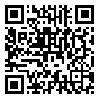BibTeX | RIS | EndNote | Medlars | ProCite | Reference Manager | RefWorks
Send citation to:
URL: http://ijn.iums.ac.ir/article-1-28-en.html
Daytime fatigue and somnolence may be the results of parasomnias, and when they occur frequently the problem gets worse, therefore, to examine the prevalence of parasomnias and it’s relationship with, age, gender, parental educational level and parental stress, we performed a cross sectional study with the participation of 900 children for whom, their mothers completed questionnaires.
The most frequent types of parasomnias were restlessness (36.7%), somniloquy (27.9%), and bruxim (26.9%), and some types were related to age, gender, parental education and stress (P=0.005).
Overall, as a great majority of children experience parasomnias at least once a weak, the researchers recommend a study in which, the duration of sleep and daytime fatigue to be assessed, and also, behavioral disorders of children with parasomnias to be evaluated .
Received: 2006/12/17 | Accepted: 2014/01/4 | Published: 2014/01/4
| Rights and permissions | |
 |
This work is licensed under a Creative Commons Attribution-NonCommercial 4.0 International License. |




